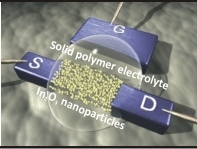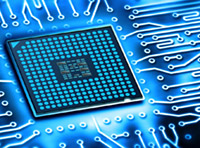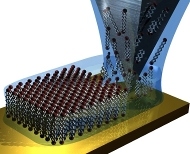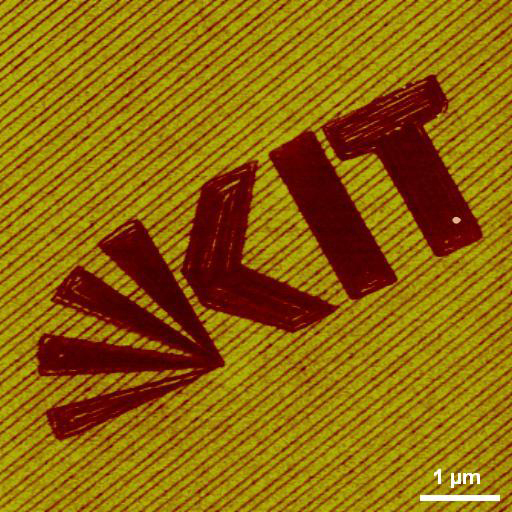Printable Systems: Materials and Methods
Research in printing materials and devices is driven by the desire to lower costs for everyday applications, where demands for high-reliability or minituarization are secondary.
At the INT we work on printing electronic devices based on inorganic nanomaterials, a field in which we have proven some of the more common beliefs to be incorrect, in particular, that electrochemical gating using solid electrolytes is not the limiting factor in device performance. We also work with novel printing technologies such as Polymer Pen Lithography, which produces lateral structures at dimensions of about 5 micrometers, much smaller than conventional printing technologies.
Additionally, we coordinate the Helmholtz Virtual Institute in Printed Electronics, with the aim of developing interdisciplinary cooperation concepts for the manufacture of commercially relevant printed circuits.

Solution-processed, printed oxide, and novel dielectrics for printed and nanowire electronics

Printed devices, modelling and virtualization of electronic systems, VLSI circuit design and testing

Chemical modification of surfaces and devices by dip-pen nanolithography and polymer pen lithography

The atomic force microscope as a mechano-electrochemical pen
Matthias Barczweski
Thomas Schimmel
